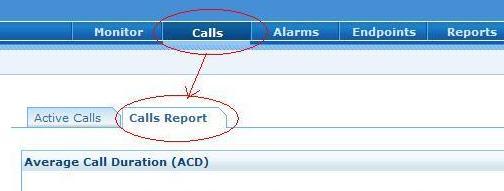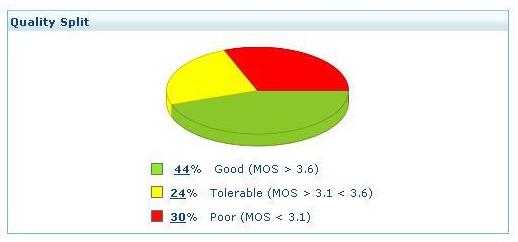Today we’ll see what’s present in the all new ‘Calls Report‘ section, found under VQManager’s “call” tab.
For the sake of simplicity, VQManager broadly categorizes calls as either Successful or Unsuccessful calls. Further categorization is done based on the call tear down status.
Unsuccessful Calls split
Analysis has to be started once a call fails, ie an Unsuccessful call. It is almost impossible to debug each and every unsuccessful call that happens in the network so VQManager’s ‘Unsuccessful Calls split’ pie chart lists the ‘Top 10’ reasons for unsuccessful calls. In a call center or large enterprise the ‘Busy Here’ reason will be of greater concern unlike the small enterprise where other failure categorizes such as ‘Server error’ or ‘Not found’ will be of high priority. Real troubleshooting of failed/error/unanswered calls begins here. Picture pasted below shows the hybrid environment running SIP, SCCP and H.323 protocol and the pie chart is consolidated across protocols to give greater visibility into call failures.
Successful Calls split based on quality
Once a call is categorized as successful, further concern is whether that call has acceptable quality? How was the user experience? A successful call will have call initiation signaling packets, media traffic (RTP) and tear down signaling. VQManager segregates a successful call with media (RTP) traffic into Good, Tolerable or Poor based on the MOS (Mean Opinion Score) of a call. MOS is a consolidated QoS metric, which is derived from a ITU-T formula, which takes into consideration other quality metrics such as delay, jitter, loss, codec etc.,. The new ‘Quality Split’ pie chart under ‘Calls report’ of VQManager 6.3 helps in identifying call quality – whether they are Good, Tolerable or Poor. QoS distribution percentage and the call numbers are provided on mouse-over. Further troubleshooting of Poor, Tolerable quality calls begins here.
Explore the ‘Calls Report’ along with call quality trend graphs for actionable insights into VoIP call and quality failures.
Regards,
Subash
Download Trial |Twitter | demo



I am myself using Axvoice and have been through different voip services in the past but i always wondered the actual reasons which were really responsible for the poor call quality. Now i know, thanks for sharing such an informative article.